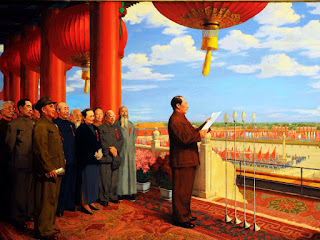Dazu Rock Carvings - A Hidden Gem in Chongqing
The 5th and 7th centuries were the peaks of rock carvings originated from ancient India. When the 8th century came, Buddhism took a hit. Yet, the bas-reliefs on precipices of Dazu County, Chongqing, suddenly emerged. In the following five centuries, the Dazu Rock Carvings continued to grow into China's largest-scale grottoes. It became an outstanding example of Chinese grotto art in its later period.
The Dazu Rock Carvings represented by Beishan, Baodingshan, Nanshan, Shizhuanshan, Shimenshan cliff sculptures are an essential part of Chinese grotto art and the most significant work of such kind during the 9th -13th century. They are in large scale, exquisitely carved, diversely themed, richly informative, and best-preserved. The sculptures here are not just about Buddhism but also about Taoism and Confucianism, providing sufficient evidence of how the three religions influenced Chinese society collectively. Therefore, Dazu Rock Carvings is the second Chinese grotto art included in the "World Heritage List" after Dunhuang Mogao Grottoes.
Quick Facts about Dazu Rock Carvings
Name: Dazu Rock Carvings, “大足石刻” in Chinese
Location: Dazu District, Chongqing, China, 110km from Chongqing city
Package Ticket: 170 RMB (March - November); 120 RMB (December - February)
Best Time to Visit: All year round
Time Needed: 3-6 hours
Opening Hours: 8:30 - 18:00
What to expect: Buddhism, Taoism, Confucianism, Rock Carvings, Grottoes, History.
History of Dazu Rock Carvings
Among the existing Dazu Rock Carvings, the earliest ones are the Jianshanzi cliff sculptures carved in 650 (the first year of Tang Yonghui Reign). In the following 200 years, only Shengshuisi cliff sculptures were carved. By then, only 20 niches were chiseled. In 892, the Changzhou envoy Wei Junjing set up the Yongchang Village in the Longgang Mountain area (today's Beishan area) and began to build the Buddha statues. Later, locals followed suit and continued to course to the mid 10th century, creating the first peak of sculpture carvings.
During the mid 10th century and late 11 century, the cliff statues' carving stopped, and the stone carvings worshipped in temples became popular. For example, the Buddha statues in Dazhong Temple in the east, Shibi Temple in the west, and the Yan'en Temple in the north are mostly created.
From 1078 to 1173, the second wave of rock carving took place. Since a local manor owner Yan Xun donated a piece of land to excavate Buddhist, Taoist, and Confucian statues, other local people also pioneered another 32 statues areas. Most of the works in Nanshan, Shimenshan, and Beishan were made at the time. It's the second peak of rock carving art.
During the 70 years from 1174 to 1252, a famous Dazu monk named Zhao Zhifeng inherited the Tantrism and practiced on Baoding Mountain. He collected alms and built nearly 10,000 statues, which became the only large-scale ashram made of rock carvings. Many disciples came here to learn from Zhao Zhifeng, and Baodingshan also became the epicenter for the Chengdu Yoga School of Chinese Tantrism.
At the end of the 13th century and the middle of the 17th century, part of Dazu Rock Carvings suffered two burnings, like the Shengshou Temple of Baoding Mountain. In contrast, the cliff sculptures survived the turmoils till today. Small niches for Avalokitesvara, Mountain Gods, heavenly gods, and earthly goddesses were added in later generations.
Five Main Attractions
Shimenshan Rock Carvings
Located in Xinsheng Village, Shima Town, 20km from Dazu Town, the Shimenshan Bas-reliefs are mainly made in 1094 - 1151. They are 71.8m in length and 3.4-5m in height. There are 12 niches, 20 statues, eight monuments, and inscriptions.
Shimenshan bas-reliefs about Buddhism and Taoist sculptures, especially the characteristic Taoist statues. For instance, the Clairroyant Statue outside the niche of Jade Emperor has a pair of eyes like copper bells; and the Clairaudience Statue has a rather uncomfortable face with his ears opening to listen. In the Sanhuang Cave, the 35 elegant statues with their clothes wrinkled look more humans than deities.
Shizhuanshan Rock Carvings
Situated in Fohui Village, Sanqu Town, 25km from the Dazu Town, Shizhuanshan Cliff Sculptures are made between 1082 and 1096. They are 130m in length and 3-8m in height. The cliff sculptures are classic combined statues areas of Buddhism, Taoism, and Confucianism, which rarely happens in the grotto world. In the No.6 cave, there are the statues of world-famous Confucian and his ten disciples. Confucian is sitting in the middle, accompanied by his ten students. In the No.8 cave, there is the niche for Laojun with the founder of Taoism Laozi, sitting in the middle and seven other immortals and masters standing beside. The No.7 cave is about Three-Bodies of the Buddha. The relevant chronicles tell us that manor Yan Xun funded all these niches mentioned above.
Nanshan Rock Carvings
Located only 2km from Dazu County, Nanshan Mountain has been one of Dazu's ten scenic spots since old times. It's covered with ancient trees, lush plants, and mottled paths, making it a wonderful place to relax and create. Nanshan Rock Carvings are truly precious among grotto art. Most of the carvings were made in the Southern Song Dynasty, and some were added in Ming and Qing dynasties. There are 15 caves, mainly about Taoist statues, forming a complete Taoist Gods' statues system here, including the Great Emperor Zhenwu and San Shengmu. Therefore, Nanshan Rock Carvings is the largest group of Taoist statues in China. Make sure you pay a visit to the Sanqing Cave.
Baodingshan Rock Carvings
Centered by the Shousi Temple and Great Buddha Bend, the Baodingshan Cliff Sculptures ranges 2500m in the east, south, and north of the mountain. There are 360 pieces of giant sculptures, including the world-famous Buddha Wheel, Treasure Hall, and Thousand-hand Bodhisattva. Most of these Sculptures were created during the Southern Song dynasty, especially the Shengshou Temple in Great Buddha Bend. It's a majestic, richly decorated, two-story building with exquisite angled cornices.
There is the Big Buddha Bay at a mountain bay under the Shengshou Temple with a cliff 500m in length and 8-25m in height. The sculptures were carved on the east, south, and north of the cliffs, and they are all numbered 31. You will find many different works here, with engraved words. The Small Buddha Bay is located on the right of the Shengshou Temple. The major building is a stone altar, a depth of 2.31m, 16.5m, and 7.9m in depth. On the altar, there are stone walls and stone rooms engraved with Buddha statues.
The Baoding Rock Carvings were built by Zhao Zhifeng, known as "the sixth successor of Tantrism," during 1174-1252. There were nearly 10,000 Buddhist statues, forming one of the largest Tantric ashrams.
Beishan Rock Carvings
Beishan cliff sculptures are excavated during 892 and 1162. The cliff is about 300 in length and 7-10m in height. Over 5000 caves and niches jammed together look like a giant hive. The entire cliff is divided into northern and southern sections. The southern caves and niches are numbered 1-100, and the northern ones are numbered 101-290.
There are nearly 10,000 statues in Beishan cliff, and private prayers funded most of them. There are 51 types of Buddha statues, and more than half of them are about Buddhism Tantrism. There are also statues about Teachings of Three Levels and Pure-land School, which were extremely popular among commoners. Therefore, the Beishan cliff sculptures demonstrate how Buddhism was secularized and how the secularization changed the art styles of rock carvings.
How to Get to Dazu Rock Carvings from Chongqing?
There are two ways for you to get to Dazu Rock Carvings from Chongqing. The first and easy way is to hire a private driving service like us. The second way is to take the bus.
Option 1: take the shuttle bus running between Chongqing West Bus Terminal and Dazu Rock Carvings. There are a dozen shuttles buses every day, and the journey takes about 2.5 hours.
Option 2: take the bus from Chongqing Caiyuanba Bus Terminal and go to Dazu County first. The bus starts at 9:10 a.m, and it takes about 2 hours. When you arrive at the Dazu Bus Terminal, please take the bus destined to Dazu Rock Carvings.













Comments
Post a Comment